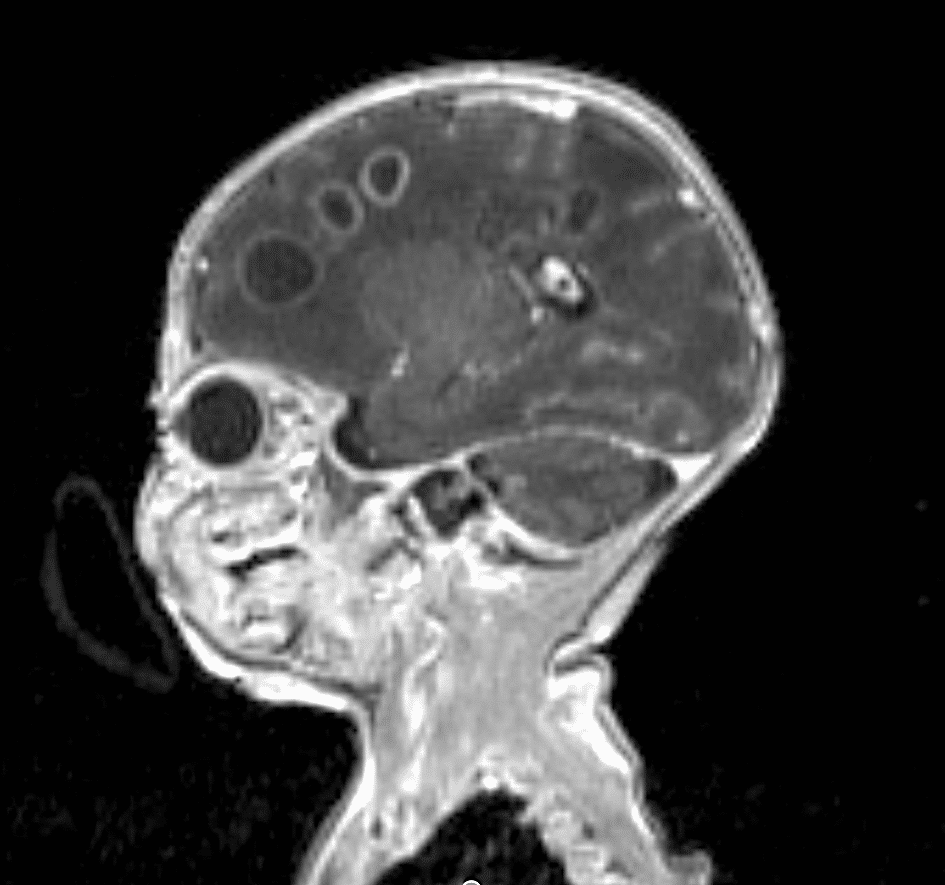
Cerebral Abscesses And Serratia Marcescens: A Case Report
Background: Cerebral abscesses in neonates are a rare clinical condition, with high morbidity and mortality rates, and usually arise in the setting of neonatal sepsis or meningitis.
Case: Preterm male, delivered by caesarian section at 35 weeks of gestation due to intra-uterine growth restriction. He weighed 1515g, and the Apgar scores were 9 and 10 at 1 and 5 min of life, respectively. On the 6th day, the clinical status deteriorated and laboratory tests showed thrombocytopenia and leucopenia. The patient started an antibiotic regimen (cefotaxime, amikacin and vancomycin), even though the cerebroespinal fluid (CSF) analysis was normal. A Serratia Marcescens was isolated in hemoculture. In 48 hours the patient developed hypertonia and irritability. The lumbar punction was repeated: CSF analysis confirmed the diagnosis of meningitis but cultures remained negative. Antibiotics were modified accordingly (amikacin and meropenem). A transfontanellar ultrasonography revealed hyperechoic circular lesions in the periventricular regions. A brain magnetic resonance imaging (MRI) showed multiple supratentorial abscesses, evolving to cavitation accompanied by incipient porencephalic dilation of the left ventricle and diffuse cerebral edema (image 1). The neurosurgical council suggested conservative treatment with antibiotics (10 weeks) and follow-up MRI every two weeks. The final MRI showed cavitation areas (previous abscesses) and a Rhatke’s pouch cyst. The baby was discharged at the 81st day of life with a normal neurologic examination. At 12 months, the patient has a mild psychomotor and staturo-ponderal retardation; the brain MRI shows chronic cavitary lesions.
Conclusion: Serratia marcescens is a known cause of sepsis in neonatal intensive care units, frequently involving preterm patients with low birth weight. When there is neurological involvement by the infection, the prognosis is usually poor. The diagnosis and treatment of cerebral abscesses is a challenge for any neonatologist, given the absence of guidelines for the duration of treatment on this subject.

Powered by Eventact EMS